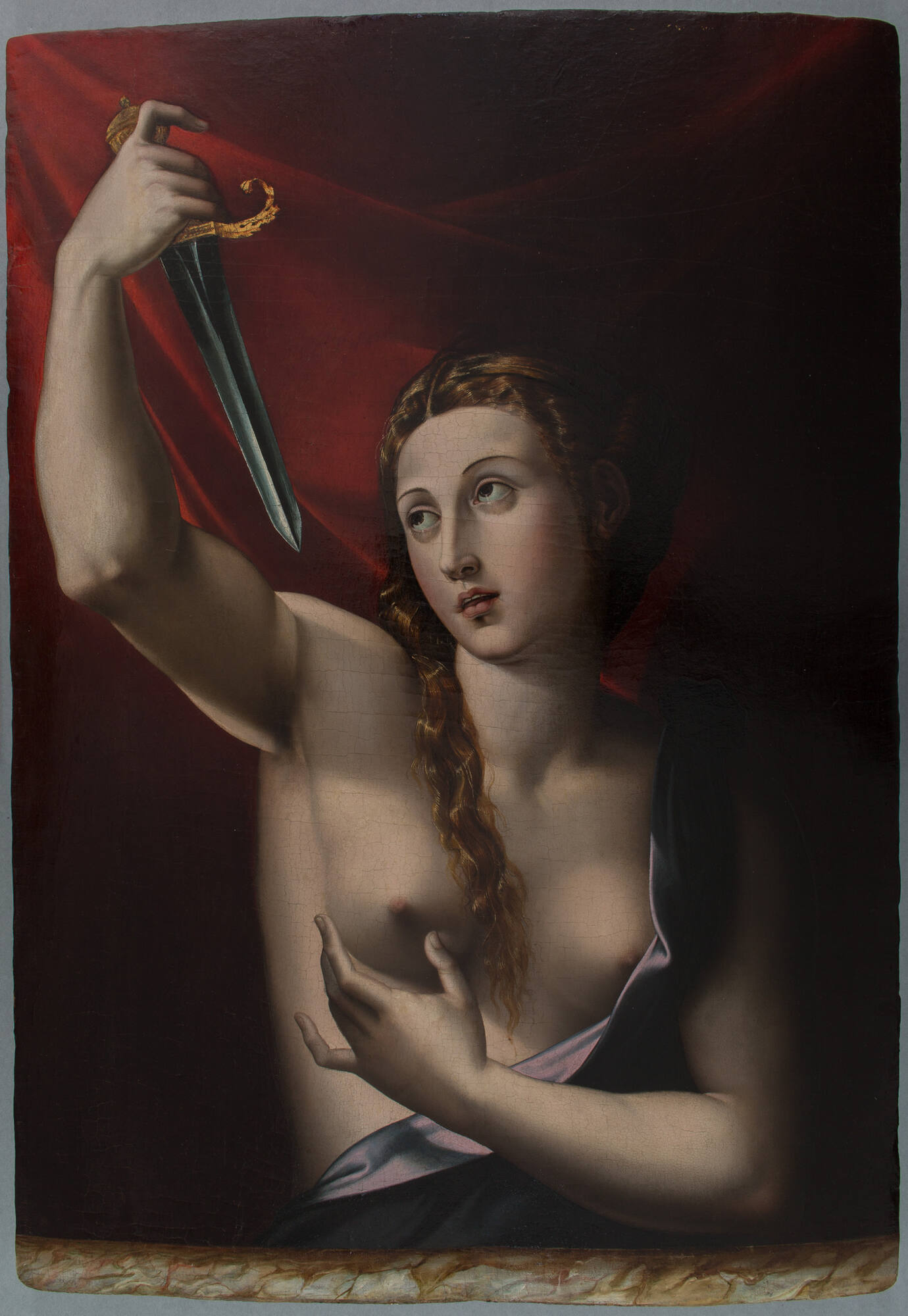
Object Details
Artist
Leonardo Grazia, called Leonardo da Pistoia
Date
ca. 1541–45
Medium
Oil on panel
Dimensions
Panel: 34 5/8 × 24 1/2 inches (87.9 × 62.2 cm)
Frame: 43 3/8 × 34 1/2 × 3 inches (110.2 × 87.6 × 7.6 cm)
Credit Line
Acquired through the Nancy Horton Bartels, Class of 1948, Endowment
Object
Number
2018.013
Sixteenth-century Neapolitan theorist and physician Bartolomeo Maranta once wrote a scathing review (…)
Sixteenth-century Neapolitan theorist and physician Bartolomeo Maranta once wrote a scathing review of mannerist painter Leonardo da Pistoia’s oeuvre, in which the doctor ironically dismissed his contemporary’s habit of drawing models “from life.” In practice, Pistoia’s use of live models provided an opportunity for the artist to study complex muscular systems without the need for anatomy books or écorché figures. Pistoia’s anatomical interests are employed here to increase the dramatic climax of the story of Lucretia, a raped Roman noblewoman who publicly committed suicide in order to protect her virtue. Though Lucretia grasps a dagger with a graceful hand and steely gaze, her tensed bicep muscles and forearm tendons belie her stoic composure. These engaged muscles offer a glimpse into the conflicted psyche of a woman who must make the difficult decision between her life and her reputation. (“Undressed: The Nude in Context, 1500-1750,” text by Brittany R. R. Rubin and presented at the Johnson Museum February 9-June 16, 2019)












